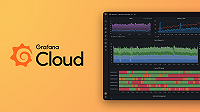Caution
Grafana Alloy is the new name for our distribution of the OTel collector. Grafana Agent has been deprecated and is in Long-Term Support (LTS) through October 31, 2025. Grafana Agent will reach an End-of-Life (EOL) on November 1, 2025. Read more about why we recommend migrating to Grafana Alloy.
Important: This documentation is about an older version. It's relevant only to the release noted, many of the features and functions have been updated or replaced. Please view the current version.
Configuration language
Grafana Agent Flow contains a custom configuration language called River to dynamically configure and connect components.
River aims to reduce errors in configuration files by making configurations easier to read and write. River configurations are done in blocks which can be easily copied-and-pasted from documentation to help users get started as quickly as possible.
A River configuration file tells Grafana Agent Flow which components to launch and how to bind them together into a pipeline.
The syntax of River is centered around blocks, attributes, and expressions:
// Create a local.file component labeled my_file.
// This can be referenced by other components as local.file.my_file.
local.file "my_file" {
filename = "/tmp/my-file.txt"
}
// Pattern for creating a labeled block, which the above block follows:
BLOCK_NAME "BLOCK_LABEL" {
// Block body
IDENTIFIER = EXPRESSION // Attribute
}
// Pattern for creating an unlabeled block:
BLOCK_NAME {
// Block body
IDENTIFIER = EXPRESSION // Attribute
}You may have noticed that River looks similar to HCL, the language used by Terraform and other Hashicorp projects. River was inspired by HCL, but is a distinct language with different syntax and features, such as first-class functions. If you are already familiar with HCL or Terraform, writing River should seem mostly natural to you.
For historical context on why we decided to introduce River, you can read the original RFC.
Blocks are a group of related settings, and usually represent creating a component. Blocks have a name which consist of zero or more identifiers separated by
.(likemy_blockorlocal.fileabove), an optional user label, and a body which contains attributes and nested blocks.Attributes appear within blocks and assign a value to a name.
Expressions represent a value, either literally or by referencing and combining other values. Expressions are used to compute a value for an attribute.
River is declarative, so the ordering of components, blocks, and attributes within a block is not significant. The order of operations is determined by the relationship between components.
Tooling
To help you write configuration files in River, the following tools are available:
- Experimental editor support for
- vim
- VSCode
- river-mode for Emacs
- Code formatting using the
agent fmtcommand
You can also start developing your own tooling using the agent repository as a go package or use the tree-sitter grammar with other programming languages.



